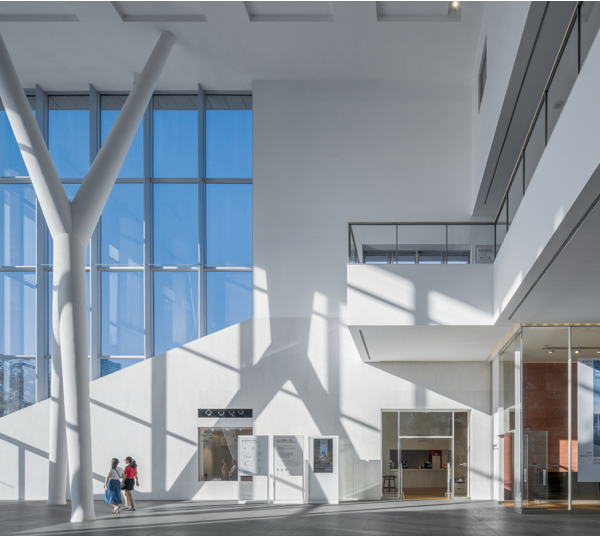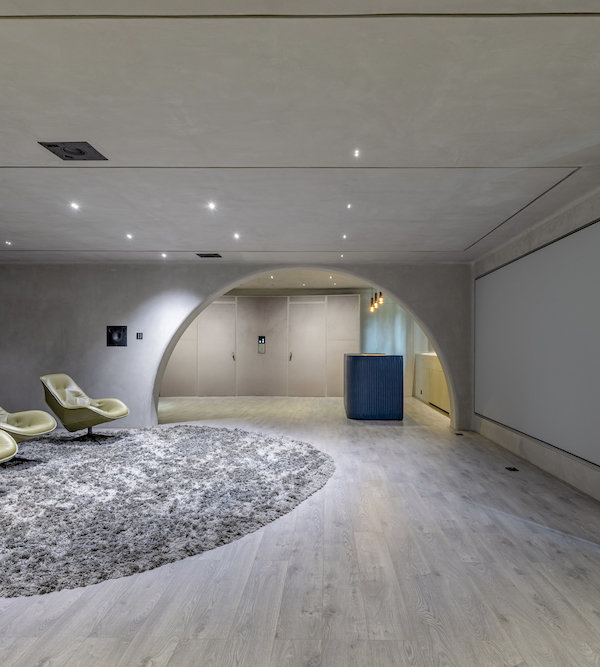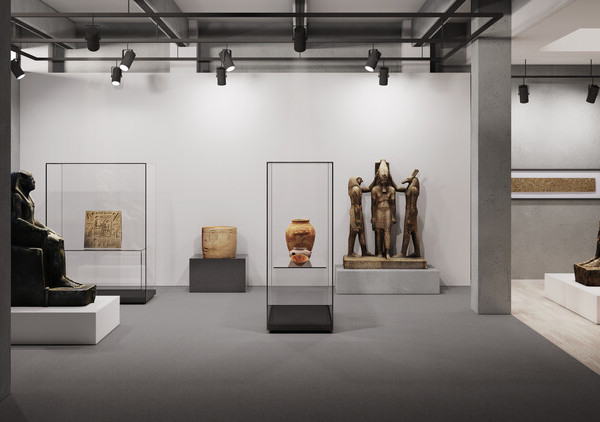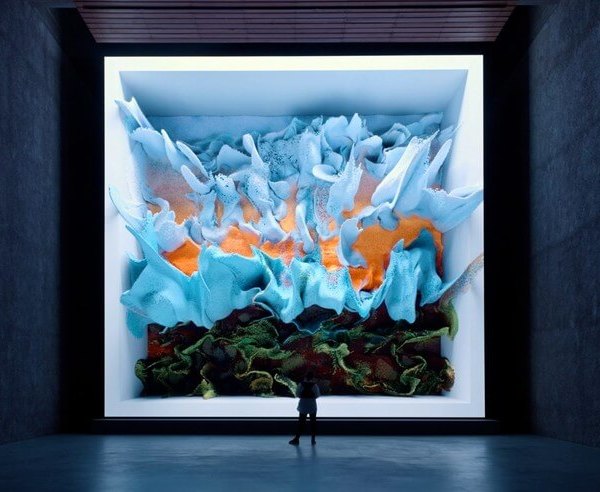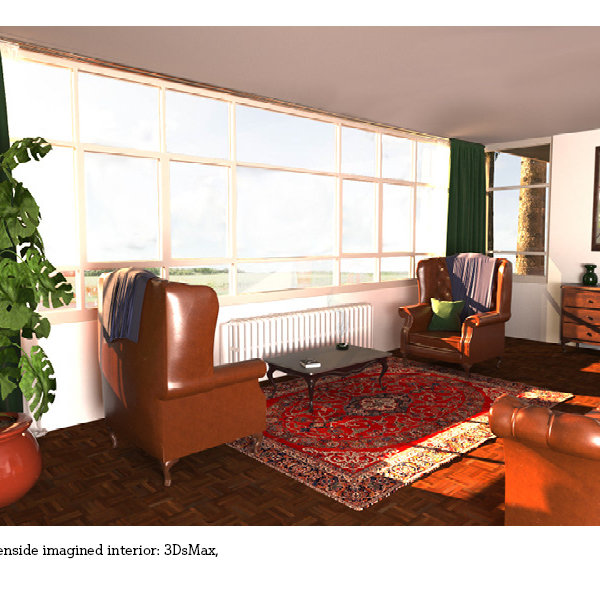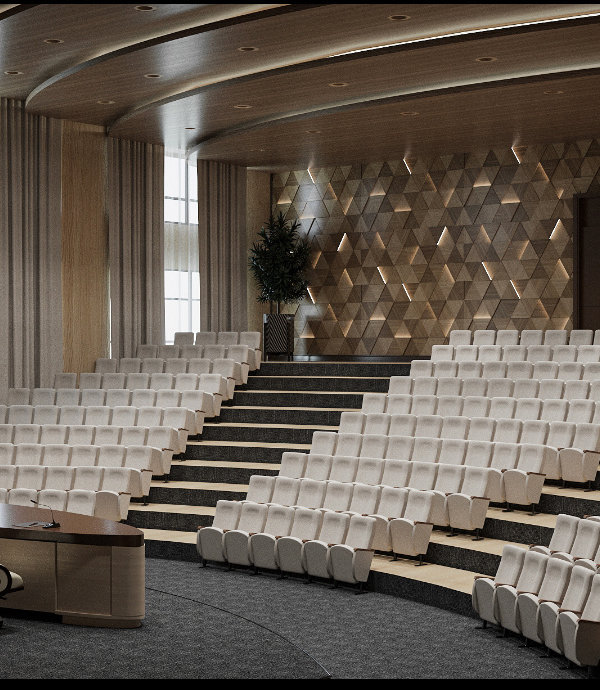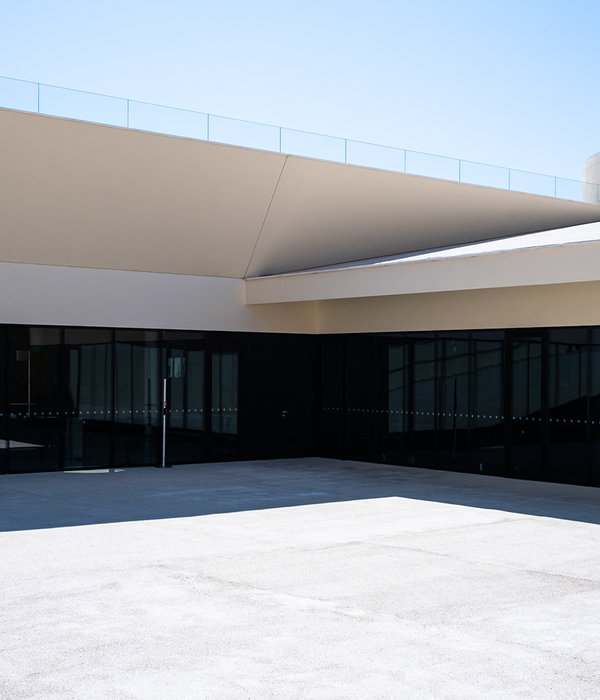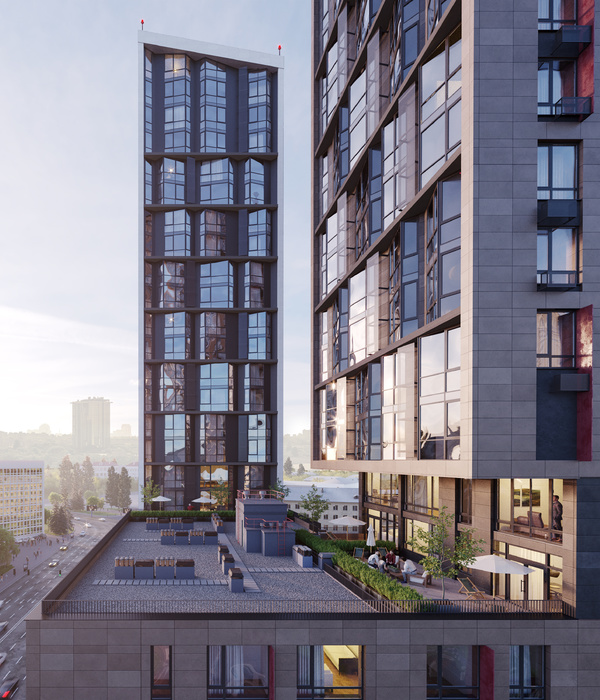- 项目类型:图书馆
- 项目地点:意大利梅佐隆巴尔多
- 设计方:DAP Studio
- 完工时间:2023 年
- 主要材料:青铜色金属板,木材,白色波纹金属板等
- 项目业主:梅佐隆巴尔多市
Architects:DAP Studio
Year:2023
Photographs:Marco Introini
Manufacturers:Magis,Medit,Promal,Quinti,Targetti
Architectural Design:Elena Sacco, Paolo Danelli (DAP Studio)
Structural Design:SM Ingegneria srl
Client:Municipality of Mezzolombardo Trento
Project Coordination And Construction Management:Arch. Paolo Danelli
Systems Design:Planex srl
City:Mezzolombardo
Country:Italy
Text description provided by the architects. The historic former Equipe 5 winery has been redeveloped to house a Cultural Hub that includes the Civic Library with attached Study Rooms, the Historical Archive, and a Conference Room. These spaces, open to the entire community, become a fundamental point of reference for city life. The Library offers books, newspapers, study stations, internet access, music, armchairs, spaces for children, meeting rooms, and various courses. The Cultural Hub aims not only to provide well-structured spaces and services but also, as library design expert Antonella Agnoli states, to create "an atmosphere, a way of being together, of consulting, of exploring, of spending time, of cultivating relationships with others." The Ex Equipe 5 building is located in the heart of the historic center, in an area characterized by a compact urban fabric with inner lots accessible through narrow paths. The main access, for those coming from the city center, is through an alley leading to an internal garden, while a secondary entrance opens onto Via De Gasperi. In front of the building, a succession of Doric columns creates a screen parallel to the facade, defining the entrance area to the new Center and marking the boundary between the paved surface and the green area.
The project received authorization from the Superintendency for Architectural Heritage of the Autonomous Province of Trento due to the presence of fine architectural elements: the entrance portals to the building and garden, the external colonnade, the monolithic stone pillars with quadrangular bases and simple capitals supporting the vaults on the basement and ground floors. The project is characterized by the delicate relationship between pre-existing and new interventions, with new openings relating to the facade's design, aligning with and echoing the geometry of the existing windows. The idea was to overlay the facade with elements that subtly alter the front's design: projecting volumes made of burnished bronze-effect sheet metal and wood, including the Library's entrance vestibule, the service stair railing parallel to the front, and the suspended volume marking the Foyer entrance. The burnished bronze-effect sheet metal complements the wood of the fixtures with its warm, discreet color, introducing a sense of preciousness that highlights the building's new public purpose and the importance of its new functions.
At the entrance from Via De Gasperi, there is a low structure whose roof was demolished to create a small open patio, clad on the inside with white corrugated sheet metal. This area, a sort of outdoor room that filters and anticipates the Cultural Center's spaces, is the preferred entry point for accessing the study rooms. The study rooms are accessible both from inside the library and independently from the patio, allowing them to be used even in the evening when the library is closed. This flexible use has proven particularly attractive to younger users, establishing the Library as a gathering space. The building has been functionally divided into two main areas with separate entrances that can operate independently: the conference area and the library area with attached study rooms and children's rooms. A central and shared service strip was created between these areas, while the vertical distribution connecting the various levels is positioned at the boundary between the two areas. The organization of spaces and accesses was designed to allow flexible use of the Hub. The Multipurpose Room and Study Rooms can extend their opening hours into the evening, and the Children's Area has direct access from the outside, to be used during special events that might disturb other library users. A small foyer is also planned to distribute all functions present in the building, including the historical archive, a room equipped for consultation, and a sliding compactable archive system. The library's functional area is organized on three levels: the ground floor, the mezzanine level on a balcony, and the basement. The ground floor is a large open-plan room directly accessible from the outside, thanks to the projecting vestibule or through the foyer filter. Here are located the reference area, the consultation room, and the periodicals area. The counter is strategically positioned to control access to both the library and the conference area. Near the entrance, the volume containing the librarian's office overlooks the library space through windows. The vertical connections, elevator, and stairs, connecting the library's three levels, were similarly strategically positioned. Within the large open space, lined with floor-to-ceiling shelves, informal reading areas alternate with consultation tables, with areas for adults and young people mainly organized with low bookshelves and furniture elements.
The Library space is architecturally characterized by the presence of ceiling-suspended elements we have defined as "suspended volumes." These are fabric elements that frame and perceptually organize the space, marking from above specific areas: the Library's entrance zone from the Foyer, the straight staircase leading to the mezzanine, and a more secluded consultation area. The Children's Area is located in the low building adjacent to the main body: it is connected to the library's open space and has access to its outdoor area. It is a wood-paneled environment, equipped with bleachers, low shelves, and colorful, playful furniture. The Conference Room, accessible both from the foyer and the entrance on Via De Gasperi, is a large room suitable for hosting about 123 people and 4 speakers. The seats and tables are designed to be mobile, easily movable, and storable to allow for easy and quick reconfiguration of the space. The conference room has service spaces: a data center/control room and a binding area, all equipped for activities. The service area is a fitted strip located between the Conference Room and the Library. A long corridor distributes changing rooms, toilets, and technical rooms, identifying areas for staff and areas for the public. The different rooms open towards the corridor like colored boxes in contrast to the black partition wall.
In the basement, the project includes a more informal library area, usable for events and cultural activities. This level is connected to the ground floor via an internal staircase and an external staircase open to the entrance garden. The construction of this staircase exposed part of the previously underground exterior facade, characterized by a very irregular surface that has been preserved. The void created by the external staircase intersects the Library's entrance vestibule, making it readable from the side as a bridge volume. The basement is a space with vaulted ceilings, stone pillars, and stone walls that have been consolidated with a rough plaster that retained the walls' materiality, leaving the texture of the stone blocks visible. In this space, new elements with an essential design are inserted: the exposed concrete staircase and elevator shaft, wooden bleachers, white tables and chairs, and neutral-toned upholstered seating. A strongly characteristic element is the lighting system, consisting of luminous rectangles suspended under the vaults, framing specific areas such as work areas and the bleacher space.
Project gallery
Project location
Address:Mezzolombardo, Italy
{{item.text_origin}}

